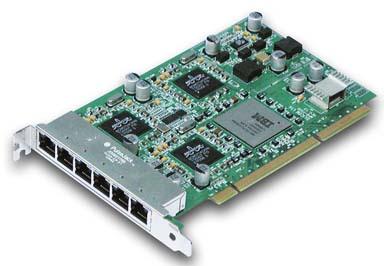- Related articles
- The Things You Need to Know about 10GBASE-CX4 Ethernet Standards
- Applicable to 1000BASE-EX Standard Optical Transceiver Models
- The difference between CSFP and SFP
- Optical Transceivers for Cisco WS-C4948-S Switch
- Cozlink Supply The Cisco X2 Transceivers Function And Compatibility
- All Cisco DWDM-X2-55.75's information (List price, Specs, Datasheet PDF, Compatibility mat
- Optical Transceivers for Cisco WS-C3560E-12SD-S Switch
- All Cisco CWDM-GBIC-1570's information (List price, Specs, Datasheet PDF, Compatibility ma
- All Cisco SFP-OC48-SR's information (List price, Specs, Datasheet PDF, Compatibility matri
- 40GBASE-LR4 QSFP+ Transceiver Links: CWDM and PSM

A network interface card (NIC) is a circuit board or card that is installed in a computer so that it can be connected to a network.
A network interface card provides the computer with a dedicated, full-time connection to a network. Personal computers and workstations on a local area network (LAN) typically contain a network interface card specifically designed for the LAN transmission technology.

Multiport Network Card
The multiport network card is an IEEE 802.3/u/ab standards compliant PCIe network adapter, which adds connections to up to four separate high-speed Gigabit networks from a single desktop client, server or workstation.
Suitable for any PCI Express enabled computer, this Gigabit Ethernet Network Adapter Card offers a practical, cost-effective resource for business, corporate or government environments, with support for high performance 4-channel networking and maximum throughput up to 1000Mbps in each direction (2000 Mbps total) - up to ten times faster than 10/100 Ethernet.
Compatible with a broad range of operating systems, this versatile PCIe Gigabit NIC is suitable for many SMB and Enterprise applications such as virtualized environments that require multiple NICs.
PCI Express Network Card
A Network interface card, NIC, or Network card is an electronic device that connects a computer to a computer network, usually a LAN. It is considered a piece of computer hardware. Today, most computers have network cards.
Network cards let a computer exchange data with the network. To achieve the connection, network cards use a suitable protocol, for example CSMA/CD. Network cards usually implement the first two layers of the OSI model, that is the physical layer, and the data link layer. Today, most network cards use Ethernet. Other network types are ARCNET, introduced in 1977, LocalTalk or Token Ring. There are many network cards which are compatible to only respective software. depending on your computer architecture you have to find a compatible network card.They are needed to access the Internet and local networks, and they can function with custom networks types
Summary
High-speed Intel Gigabit Ethernet NICs play an essential role in the virtual infrastructure model: running multiple VMs on one physical server creates a need for multiple server ports in a small form factor. In particular, best practices for VMware ESX Server call for at least three dedicated network connections. Multiport Intel PRO adapters are the optimum solution, providing the extra ports to support the virtual infrastructure in one server slot and freeing I/O slots in servers that require additional ports. Intel multiport NICs also allow IT administrators to configure redundant ports to improve throughput and reliability. With VMware server virtualization software, traffic that was once hosted on three physical servers can now be handled by three VMs on the same physical server as long as that server is properly equipped with the required network connections provided by Intel multiport NICs.





































































